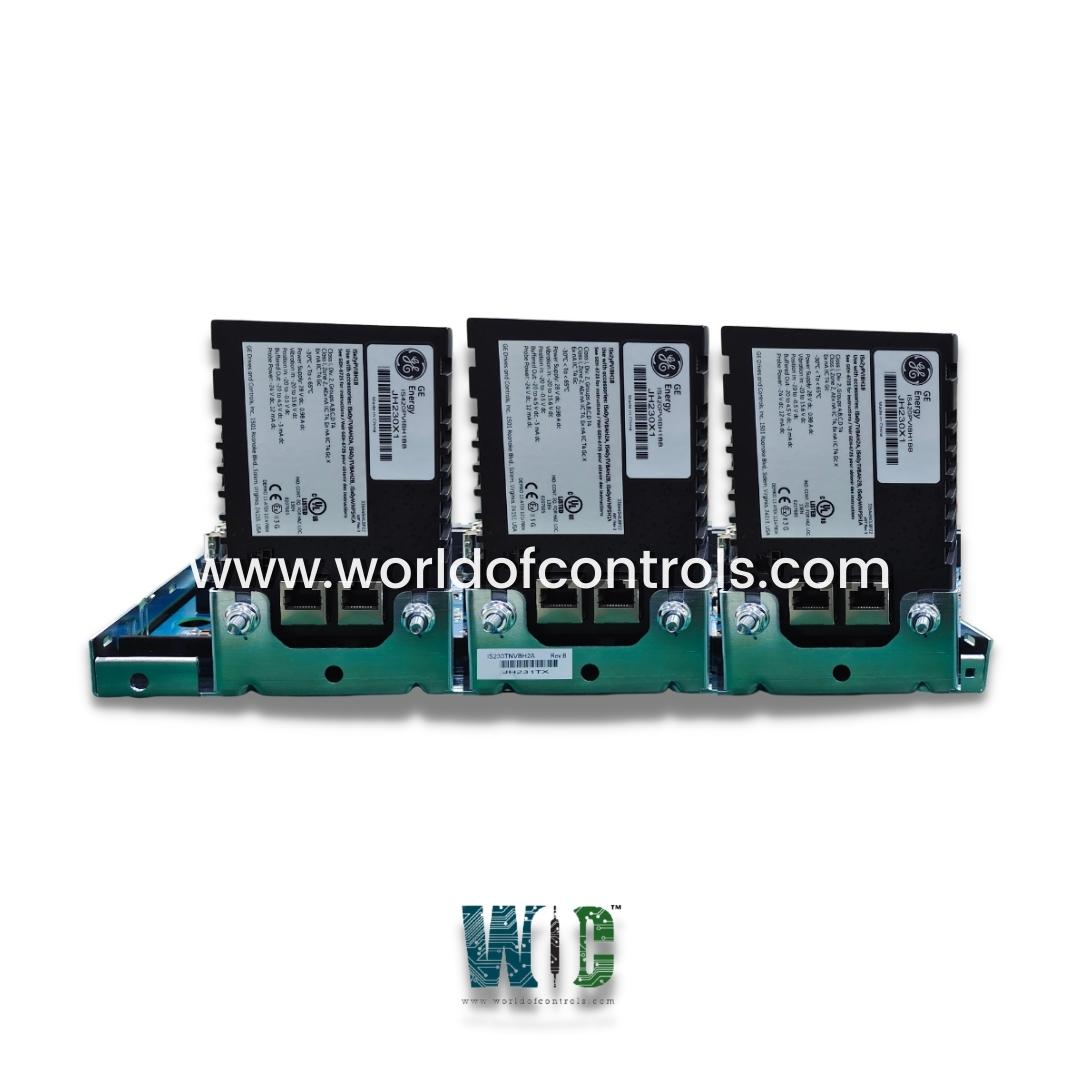SPECIFICATIONS
Part Number: IS230TNVBH8A
Manufacturer: General Electric
Series: Mark VIe
Input: 28 V ±5%
Output: -28 V ±5%
Output Ripple: 1% of dc value
Iout: 400 mA maximum
Function: Vibration Input Assembly Module
Availability: In Stock
Country of Manufacture: United States (USA)
Functional Description
IS230TNVBH8A is a Vibration Input Assembly Module manufactured by General Electric. It is a part of the Mark VIe Control System. Mark VIe I/O packs include a generic processor board and a data acquisition board that is specific to the type of connected device. Each terminal board's I/O packs digitize the signal, run algorithms, and communicate with the Mark VIe controller. The I/O pack detects faults by combining special circuitry in the data acquisition board with software running on the CPU board.
Buffered Outputs
The TVBA (Transducer Vibration/Bently Nevada Adaptor) not only provides standard 37-pin connections for each channel but also offers additional buffered outputs for enhanced functionality. These buffered outputs allow the monitored signals to be accurately transmitted and interfaced with various systems. Here are the key details regarding the buffered outputs:
- BNC Connector: Each channel on the TVBA is equipped with its own BNC connector, providing a convenient interface for connecting and transmitting the buffered signal. The BNC connectors ensure secure and reliable connections between the TVBA and external devices or systems.
- 25-pin (Vib/Position) or 9-pin (Keyphasor) Connector: In addition to the BNC connector, each channel also features either a 25-pin (for vibration/position signals) or a 9-pin (for Keyphasor signals) connector. These connectors are specifically designed for seamless integration with the Bently Nevada 3500 monitoring system, enabling direct connection and communication between the TVBA and the monitoring system.
- Buffer Requirements: The buffered outputs of the TVBA adhere to specific requirements to ensure accurate and reliable signal transmission. These requirements include:
- Accuracy of amplitude: The buffered outputs maintain an amplitude accuracy of 0.1%, ensuring precise signal representation.
- Bias for seismic signals: When handling seismic signals, a -11 V dc bias with a tolerance of 5% is added to the output to achieve the desired operating conditions.
- Sink requirement for Velomitors: When interfacing with Velomitor sensors, the buffered output sinks 3 mA of current to accommodate the sensor's requirements.
- Impedance and capacitive drive capability: The unity-gain buffered output can drive an impedance of 1500 ohms and capacitive loads of up to 1000 pF with minimal overshoot (less than 10%).
- Resistive Isolation: The BNC connectors on the TVBA are designed with resistive isolation for enhanced protection. This isolation ensures that if a BNC connector is shorted or a fault occurs, the voltage at the DB (25-pin or 9-pin) connectors remains within the specified limits. This protective feature safeguards the connected devices and prevents any potential damage or performance issues.
Operation
The TVBA (Transducer Vibration/Bently Nevada Adaptor) is a device that facilitates the connection and operation of various sensors in industrial applications. It supports a total of 14 sensor connections, each serving a specific purpose. The breakdown of these connections is as follows:
- Eight Vibration or Position (ckts 1 through 8):
These eight circuits are dedicated to accommodating vibration sensors or position sensors. They provide input channels for measuring vibration levels or positional information of machinery and equipment. The TVBA allows for the connection of sensors capable of capturing vibration data or providing position feedback.
- Four Position only (ckts 9 through 12):
The next four circuits, labeled as ckts 9 through 12, are specifically designed for position sensors. These circuits are intended for sensors that solely provide positional information without capturing vibration data. This configuration enables accurate monitoring and control of the positions of critical components in industrial systems.
- One Reference probe (Keyphasor) or Position (ckt 13):
Circuit 13 is designed to support either a reference probe, also known as a Keyphasor, or a position sensor. The reference probe, such as a proximity probe, is used to detect the rotational speed or angular position of rotating machinery. Alternatively, a position sensor can be connected to this circuit to provide positional feedback for monitoring purposes.
- One Reference probe (Keyphasor) or Position (ckt 14) (for Bently Nevada 3500 interface only):
The last circuit, labeled as ckt 14, is dedicated to the Bently Nevada 3500 interface. It allows for the connection of either a reference probe (Keyphasor) or a position sensor specifically for use with the Bently Nevada 3500 monitoring and protection system. This interface ensures compatibility and seamless integration with the Bently Nevada 3500 system.
- By supporting these 14 sensor connections, the TVBA enables the monitoring and analysis of various parameters, such as vibration levels and positional information, in industrial systems. It provides a versatile solution for connecting different types of sensors, allowing for comprehensive condition monitoring, diagnostics, and control of critical machinery and equipment.
WOC is happy to assist you with any of your automation requirements. For pricing and availability on any parts and repairs contact us.
FREQUENTLY ASKED QUESTIONS
What is IS230TNVBH8A?
It is a Vibration Input Assembly Module manufactured and designed by General Electric
What is the role of the terminal board in the I/O pack?
The terminal board serves as the interface for connecting the external devices to the Mark VIe system. It provides the necessary connections and terminals for the signals to be processed and acquired by the I/O pack.
What functions are performed by the I/O pack in the system?
It performs several important functions. It digitizes the incoming signals from the connected devices, runs algorithms for data processing, and facilitates communication with the Mark VIe controller. It acts as an intermediary between the connected devices and the control system.
How does the I/O pack detect faults in the system?
The pack incorporates specialized circuitry in the data acquisition board along with software running on the CPU board to detect faults. This combination allows for fault detection and diagnosis, enabling the system to identify and address any potential issues or abnormalities in the connected devices or signal processing.
